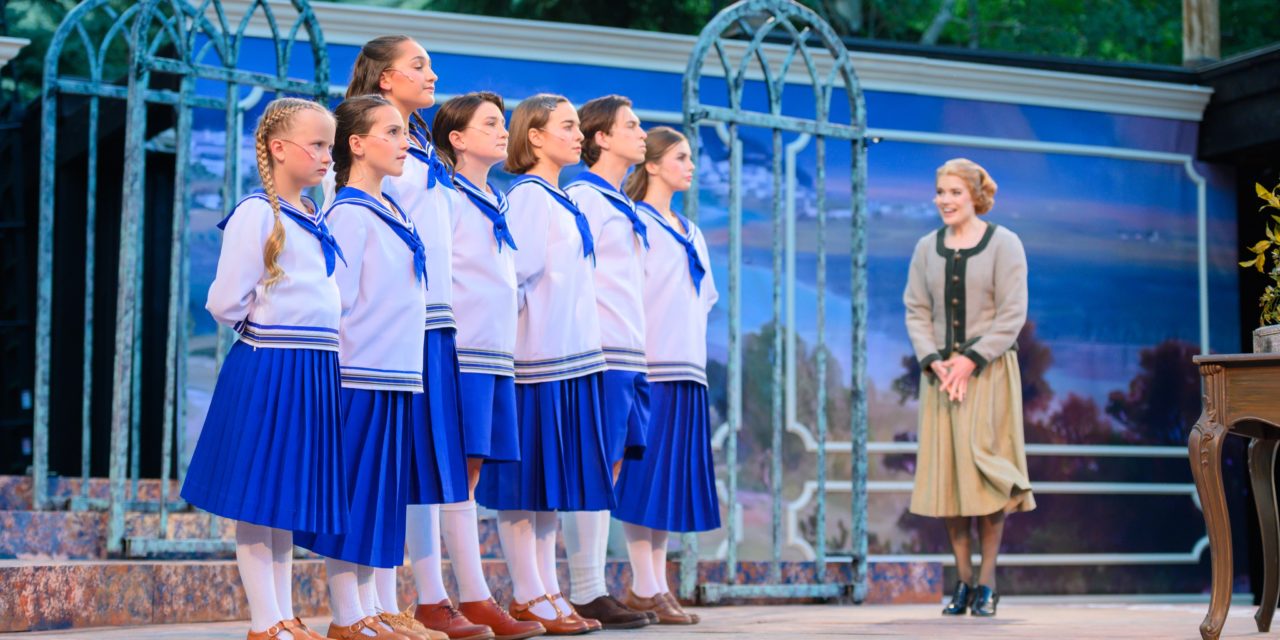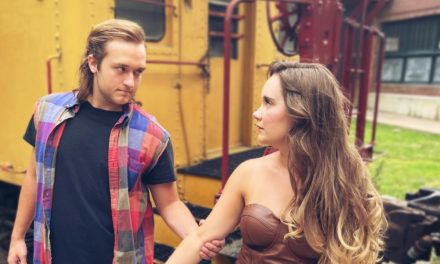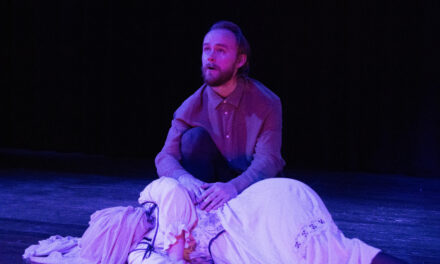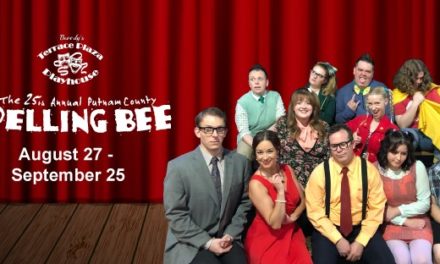SUNDANCE — What is the message of The Sound of Music? More than anything, it is the power of music to change. In the familiar Rodgers and Hammerstein musical, music is the force that changes an emotionally detached widower, Captain Von Trapp, into a man capable of loving again. It is the power that reforms his overly disciplined children into a joyful, cohesive group that plays and sings in perfect harmony. And, ultimately, it is the only power capable of saving their family from the clutches of evil.
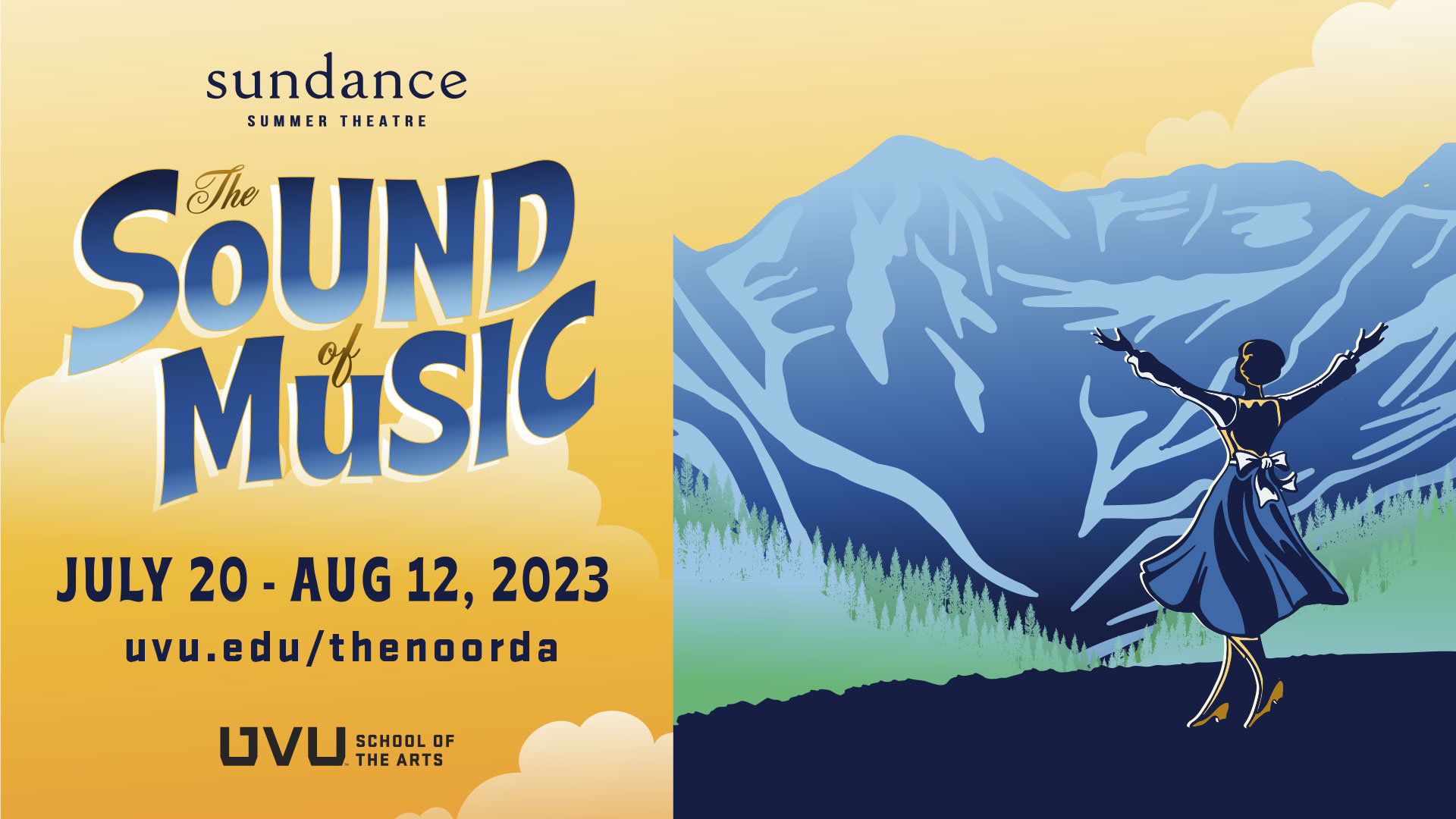
Show closes August 12, 2023.
There may be no better location to experience this show’s timeless message and incredible music than Sundance’s outdoor stage, breathtakingly nestled in the Wasatch Mountains. Sundance, in partnership with UVU School of the Arts, has produced a glorious rendition with singing so professional, pure and expressive, with such a supreme blend, that it sounded like a cast recording. Truly, the hills were alive.
It wasn’t just musical performances that made this production unmissable. Every element from the acting to technical design and direction combined wonderfully. From the tangible romantic chemistry between the leads and fresh acting of supporting roles to the equally tangible menace of the Third Reich, Sundance’s production excelled.
Lauren Pope’s performance of young nun-in-training Maria Rainer had a dewy-eyed naivety and a youthful innocence that dovetailed nicely with her earnestness and devotion to God. Pope’s vocal delivery was too close to Julie Andrews’s at times, but overall Pope gave an outstanding performance and was well matched by Dallyn Vail Bayles as Captain Von Trapp. Their romantic number “Something Good” had romance so thick, it could have been cut with a knife. As I wrote in my notes, “Wow.” Between their delivery of the dialogue (Captain: “Is there anyone I should ask…to marry you?” Maria: “Ask the children”) to the way the last word of the song was swallowed up by a kiss—it was a special scene.
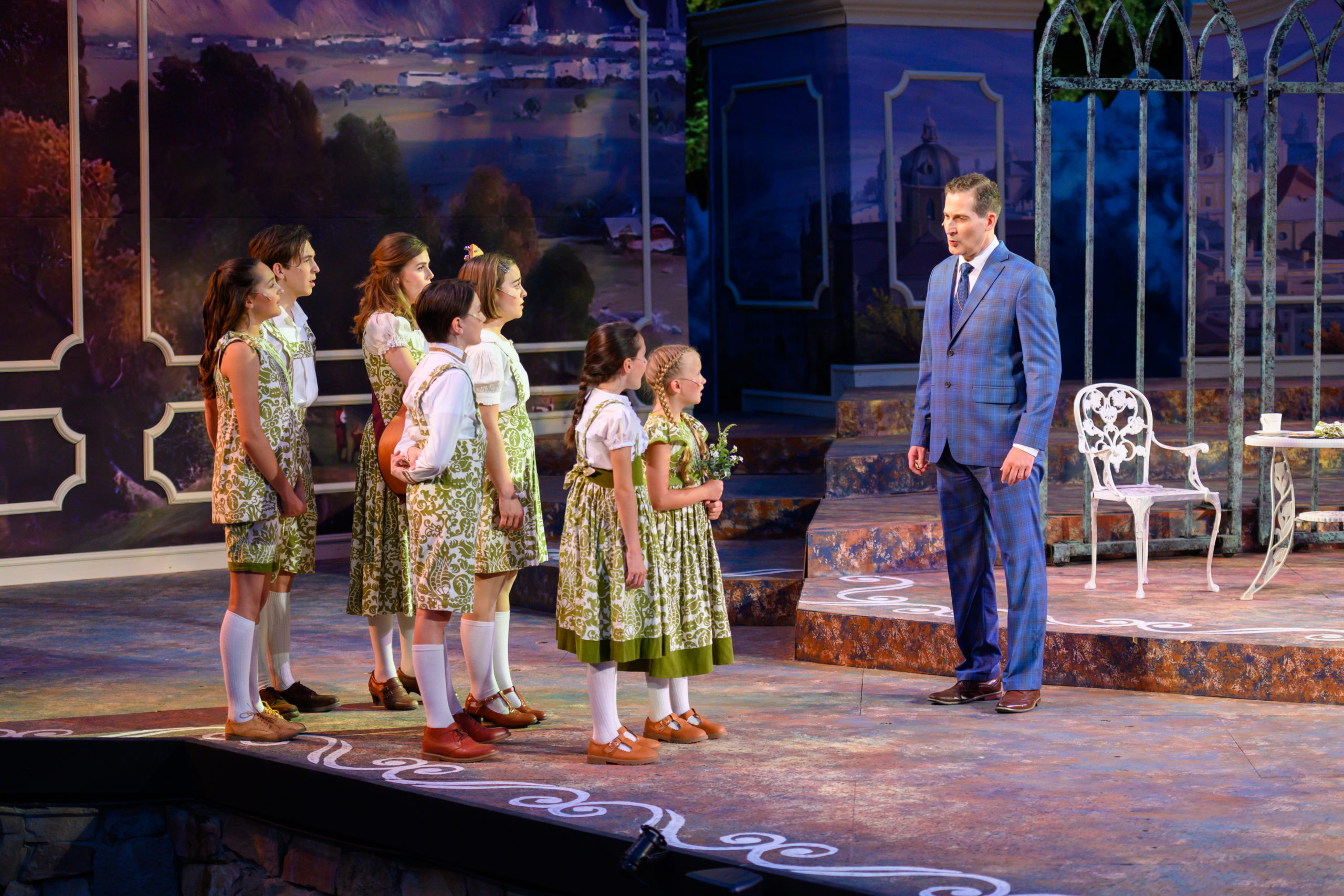
Photo by Suzy Oliveira.
Matt Dobson and Merci Hase were compelling as Max Detwiller and Elsa Schraeder, two roles substantially larger on stage in the script written by Howard Lindsay and Russel Crouse than in the 1965 film. Dobson brought fresh line readings and real humanity to the role, and Hase’s vain, worldly Elsa was a perfect foil for Maria’s youthful exuberance. The two characters created a dynamic duo who encouraged the Captain in an authentic and understandable way to be practical and save his own skin — even if it meant ignoring his conscience.
The seven Von Trapp children were a force to be reckoned with and featured tight singing and excellent movement. Each actor deserves praise for their performance, so here goes: Mariel Haven (Liesl), Sam Karlinsey (Friedrich), Mackenzie Turner (Louisa), Jack Harper (Kurt), Charley Balser (Brigitta), Lucy Balser (Marta) and Noelle Reynolds (Gretl). Isaac Gates also gave a compelling performance as Hitler Youth heartthrob Rolf Gruber; when he arrived (almost) fully brainwashed toward the end of the show, his fall from grace was as chilling as it was authentic.
Indeed, this production’s treatment of the Nazi threat was more grounded, human and realistic than other productions, and that made it all the more terrifying. The Nazis spoke in plain English and were not shown as cartoony, foreign Germans. In other words, they were presented as real people. This allowed actors Jake Englestad and Bryan Harper to effectively command actual, relatable menace as Nazi heads Herr Zeller and Admiral Von Schreiber.
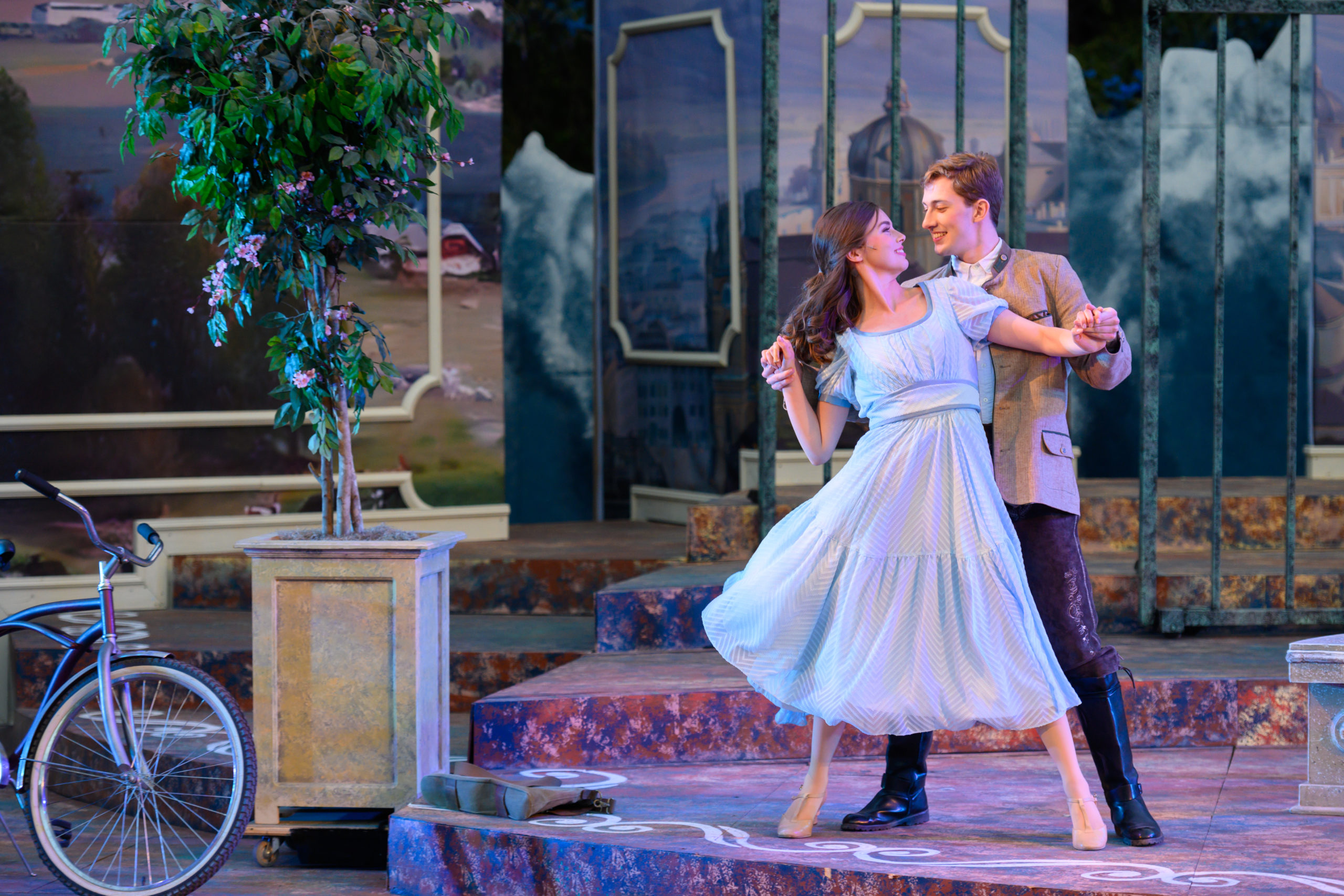
Photo by Suzy Oliveira.
This was just one of many delightful, unique choices by director Julie Heaton. Another was the wedding scene: instead of walking “up the aisle” away from the audience, Maria and the Captain walked and kneeled toward the audience, which allowed the viewing public to see and appreciate their expressions. And Rolf wiping his sweaty palms in the flirtatious “Sixteen Going on Seventeen” was a small but telling action that perfectly communicated his nervousness (and perhaps sweat from all that dancing).
Choreography by Jennifer Deflac was peppered with wonderful character moments. From the jump added to the children’s Viennese waltz, to a husband almost up in arms over Kurt blowing his wife a kiss in “So Long Farewell.” The political song “No Way to Stop It” included a particularly inspired moment when Captain waved his hand dismissively at Max and Elsa’s nonsense, before Elsa grabbed his arm and transformed the motion into a jolly do-si-do. This moment seamlessly expressed the feelings and motivations of both characters. The simple choreography for the Von Trapp’s festival number was also appropriate and seemed like something the family could have actually whipped up in a couple days.
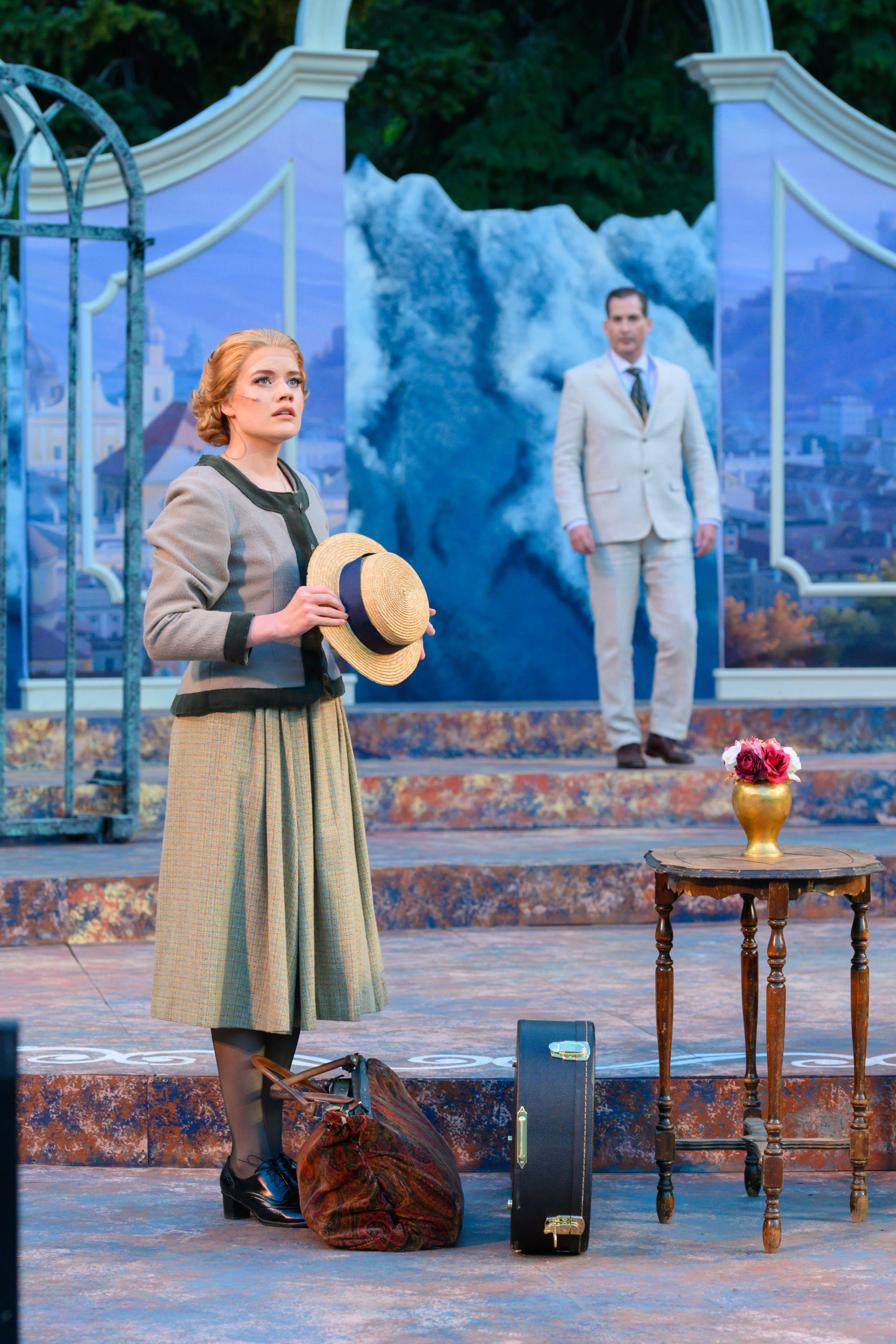
Photo by Suzy Oliveira.
Scenic designer Milinda Weeks’s set was ingenious in the way it supported a variety of settings. The giant outdoor stage was flanked by walls of frescoes of the Austrian countryside, with white molding suggesting the interior space of the Von Trapp mansion. This duality of nature and manor allowed the set to support outdoor and indoor scenes equally. Six mobile, arched window frames were moved around the stage for different settings. Like the fixed set itself, their design was also appropriate for main locations like the house and the abbey.
Lighting design by Peter D. Leonard was supportive, lit the actors well, and provided appropriate variety among different locales. Having the lights flash before the sound of thunder was a small but appreciated touch. The production also featured the best canned soundtrack I have heard, and the score was lushly orchestrated.
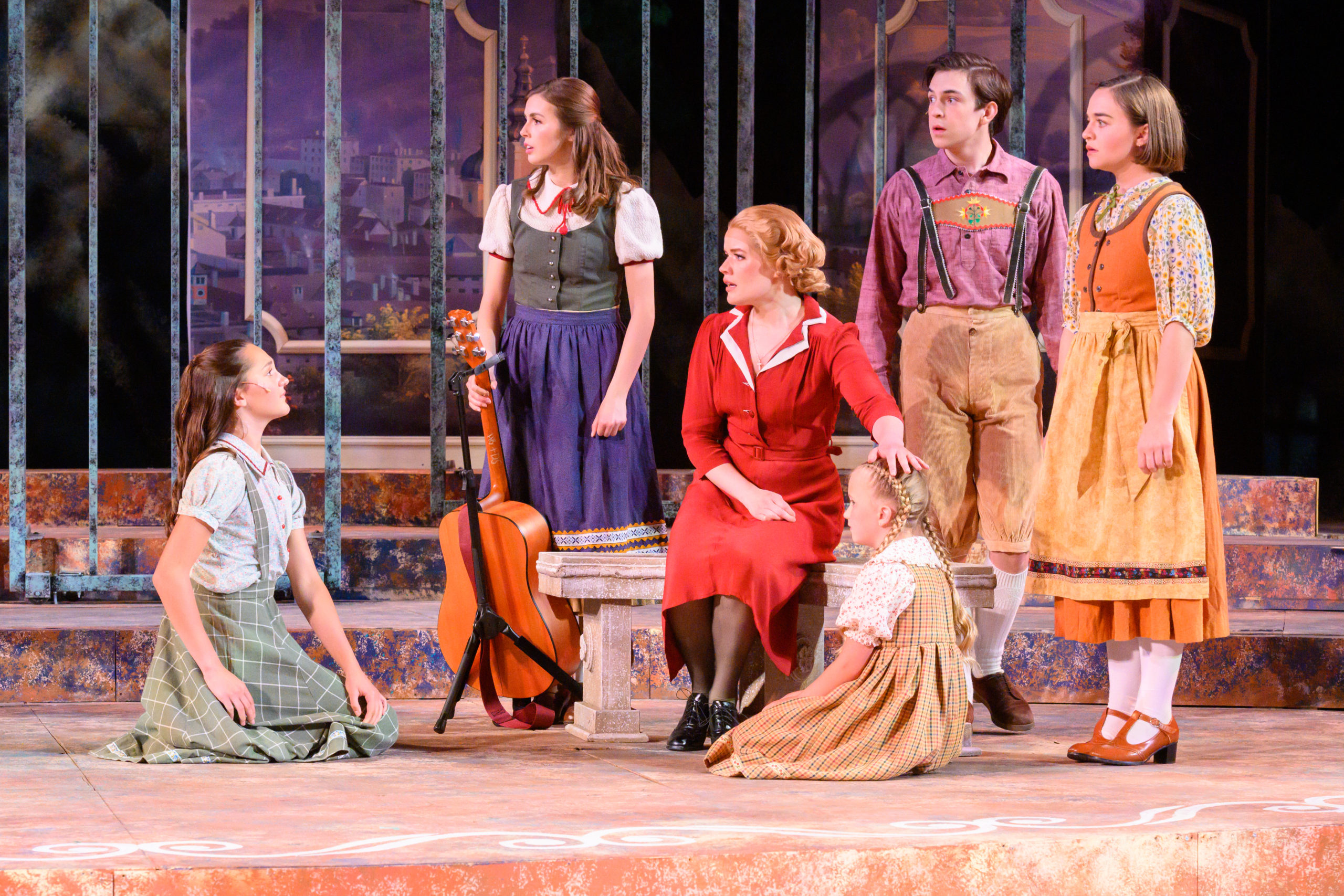
Photo by Suzy Oliveira.
The illustration on the front of the program includes Maria with arms spread, not in an Austrian meadow, but in the glorious mountain Wasatch Mountains — the same view audience members enjoy for this production. It feels like The Sound of Music was made to be seen at the Sundance, and a production lives up to the majesties around it. It took a little time for it to be clear that this production was going to be much more than a retread of the film, but soon its brilliance was almost overwhelming. Between the strength of the performances, singing, brilliant sets and direction, this production of The Sound of Music was inspired and not worth missing.
Bonus: Read UTBA’s interview with Julie Heaton, the director of The Sound of Music.

This review is generously supported by a grant from the Utah Division of Arts and Museums.

